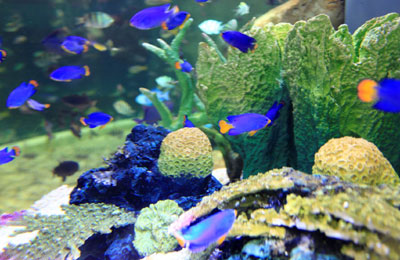Tropical fish species: how to pick what’s right for you
The article gives a detailed analysis of Tropical fish species: how to pick what’s right for you. There are tens of thousands of species of fish in the world (Fishbase.org), over a hundred of which you may find for sale in pet and aquatics stores. This can make picking fish a little overwhelming, especially if you are new to the hobby. As you are reading this article, I’m assuming that you’ve decided to do a little research before going out and buying your fish.

This is an excellent idea, as not all fish are right for every owner, for every tank, or for keeping with every other fish.The main things to consider when picking fish are the size to which the fish will grow, the fish’s behavior, the fish’s water temperature and chemistry needs, and whether you like the fish’s appearance.
If you don’t find a specific type of fish interesting, there is no point you buying it no matter how often it is recommended for beginners because you will not enjoy keeping it. You’ll be more inclined to take good care of fish that you really like. That said, picking the fish based on appearance alone without knowledge of other factors is a recipe for disaster.
The adult size reached by fishes found in the pet trade varies enormously, from fish such as the Least Killifish, where adult males reach less than an inch in length, to species such as the Red-Tailed catfish which can grow several feet long and weigh more than their owner. Fishes seen in pet stores are often juveniles that have not yet reached their full size, and determining their adult size is one of the most important reasons to do research on fish before you buy them.
Contrary to popular legend, many fishes cannot be dwarfed by keeping them in inadequately sized tanks. In many cases such treatment will result in a fish much too large for its tank and, if a larger tank is not provided, may make the fish sick or even kill it.
Freshwater Fishes seen in pet stores that grow large (can potentially reach one foot or larger) include: Arowanas, Tiger Shovelnose Catfishes, Red Tail Catfishes, Oscars, Tinfoil Barbs (Mills, 1987), Long-nosed and Six-barred Distichodus, Clown loaches, some species of spiny eel, Peacock Bass, Gourami (Osphronemus goramy)(Mills,1993) and Hypostomus plecostomus, among others. If you wish to keep large species you will need to provide an appropriately sized tank.
Very small fish are problematic mainly with regard to tank mates. They are usually incompatible with predatory fishes. They can also look truly silly in a large tank unless they are schooling species. For very small tanks, however, they are wonderful, as a school of Neon Tetras or pygmy corydoras can be kept happily in a five gallon tank that would be too small for most other fishes to behave normally in.
Fishes commonly kept in the aquarium come from a vast array of natural habitats and have an equally wide variety of lifestyles. Large predatory fish will eat smaller fish and should be housed with fish their own size or larger. Fast swimming fish will sometimes harass or frighten slow swimming fish with long fins. This subject is rather complicated and I hope to deal with it in more detail in a separate post. Fortunately, the aquarium trade contains a great many small peaceful species that will get along with each other well. The species are usually the most common ones in the pet store.
Most commonly seen tropical aquarium fishes are happy in approximately the same range of temperatures: between about 72 to 77 Fahrenheit. However, there are some species that have special temperature preferences. Discus prefer higher temperatures than most tropical fish and generally like their tank heated to over 80° F, while White Cloud Mountain Minnows are often kept in unheated tanks and may be unhappy in a tropical tank heated to 75°.
Fishes have different requirements as to how uncontaminated the water must be. Fishes excrete ammonia which is then transformed first into nitrite and then into nitrate by bacteria. This process is both interesting and very important to the functioning of your aquarium, but fortunately it usually proceeds without you the owner interfering very much.
Problems with buildup of these compounds usually occur in newly setup tanks, tanks to which antibiotics have been added, tanks that house too many fish, or tanks with filtration has been interrupted long enough to kill the aerobic bacteria involved in this process. Certain species of fish are more sensitive to these compounds than others, Discus being notoriously sensitve.
In conclusion, there are a variety of criteria to consider when choosing fish species, including size, behavior, water chemistry and temperature requirements, as well as the fish’s appearance. These vary between species, making some basic research into the species you want to keep necessary. The best place on the net I have found for information on individual species is the fish section of Monga Bay.



